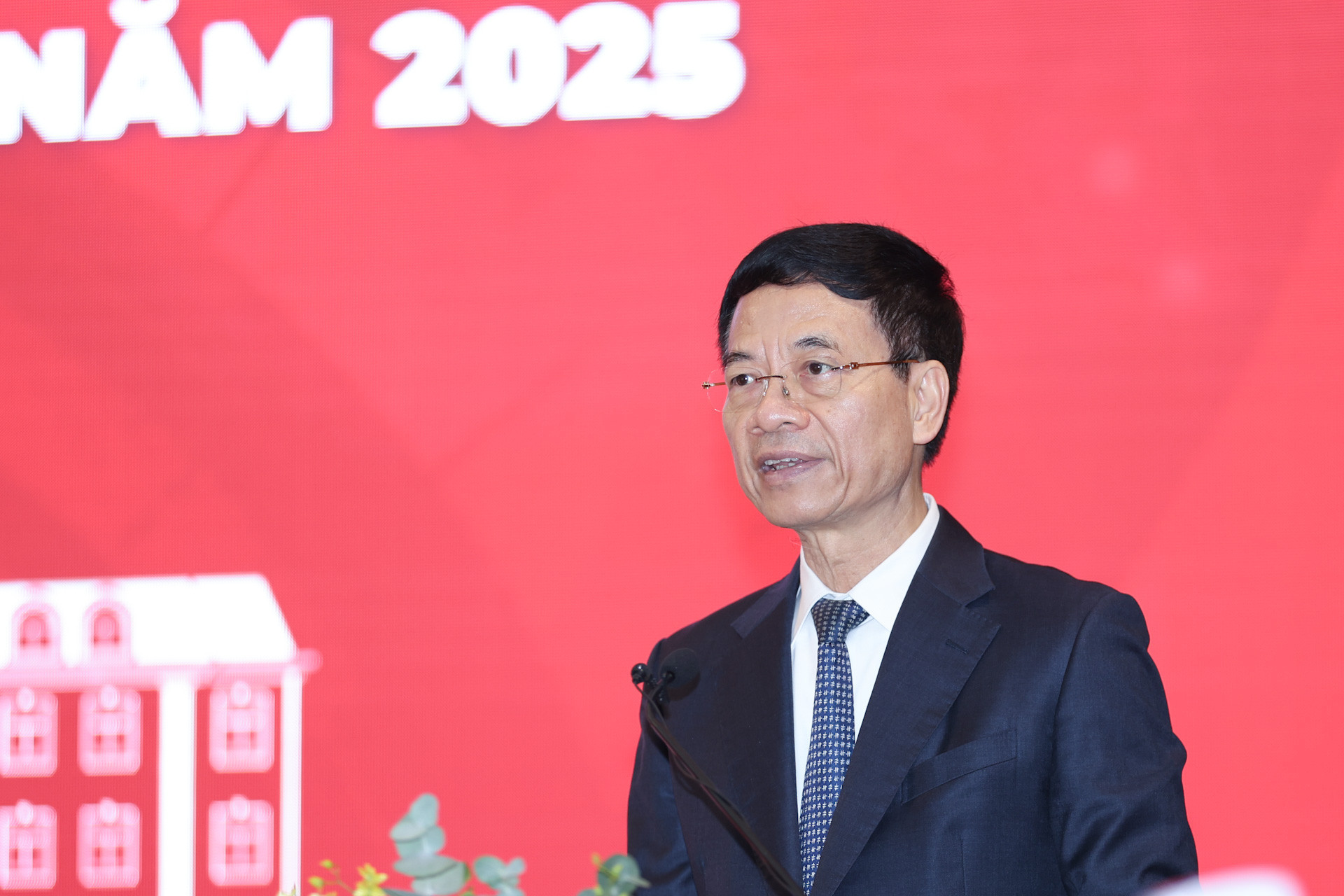
VietNamNet introduces the full text of the speech by Nguyen Manh Hung, Minister of Information and Communications (MIC), at the MIC's 2024 year-end review conference.
Five years ago, IT application was commonplace, while digital transformation was a novel concept. This novelty was not unique to Vietnam but also to the world. In principle, those who dare to pioneer will lead.
The government's National Digital Transformation Program 2020 was a bold and pioneering decision. The past five years were the time for both execution and exploration. And it is the pioneering spirit that has propelled Vietnam into the group of countries with the fastest growth in digital economy, e-commerce, digital government, online public services, and digital transformation in the region and the world.
The year 2025 marks the beginning of a new era, the era of the nation’s rise to become a high income country.
Vietnam is striving for a higher average income country by 2030, with income per capita ranking among the global top 100 (currently the 120th). However, digital infrastructure, digital technology, and the digital industry must advance, with the global ranking in top 50 by 2030. This is the target set by the Politburo’s Resolution 57 on making breakthroughs in developing science, technology, innovation, and national digital transformation.
In postal sector, Vietnam ranks 31st and strives for top 20 globally.
In telecommunications, Vietnam ranks 72nd, but it has been proceeding very rapidly. Six years ago, in 2018, Vietnam ranked 108th, which means that it has jumped by 36 grades over the last six years (six grades each year). With the grade improvement, Vietnam is certain to place itself among the global top 50, or even top 40.
In data infrastructure, the figure is 2MW per 1 million people, despite the absence of foreign investment in data center. Vietnam is among top 60 in the globe. If it can attract Big Tech to invest in data centers, and if Vietnamese companies continue making heavy investment in the field, Vietnam may be among the global top 30 by 2030.
Regarding cybersecurity, Vietnam ranks 17th and is striving for top 10.
In terms of digital technology industry, Vietnam ranks high in five digital technology products: the 2nd in smartphone exports; the 5th in computer component exports; the 6th in computer equipment exports; the 8th in electronic components and accessories; the 7th in software outsourcing.
In general, Vietnam’s digital technology industry is among the top 20 of the world, if counting the Vietnamese value in total revenue. Vietnam plans to stand firmly among the highest positions, possibly 15th, and to increase the Vietnamese value proportion from 32 percent to 50 percent of total revenue by 2030.
Regarding digital economy, Vietnam ranks 41st in the ratio of digital economy to GDP, and is moving up rapidly. In 2024, the ratio was nearly 19 percent and 20 percent is a feasible goal in 2025. Vietnam hopes it can be among top 30 by 2030, with digital economy making up 30-35 percent of GDP.
As for digital government, Vietnam ranks 71st in 2024, a jump of 15 grades just after two years. If 80 percent of public services are fully online by 2025 as per the PM’s request, Vietnam will be among the world’s top 50 in e-government/digital government by 2028, not 2030, and will be among top 40 by 2030.
As such, by 2030, Vietnam needs to join the world’s top 50 in digital infrastructure, digital technology, digital industry and digital transformation, and join top 20-30 in some other sectors.
Today, Vietnam id listed as a middle income country. Vietnam has the opportunity brought by the fourth industrial revolution – the digital technology revolution. And Vietnam has the aspiration of becoming a powerful country. The three conditions are the three pillars for Vietnam to make a strong rise and obtain two-digit growth rates.
As instructed by the Party Central Committee and the government, the Ministry of Information and Communications (MIC) and Ministry of Science and Technology (MST) will merge to form the Ministry of Science, Technology and Communications.
Over 50,000 digital technology firms under MIC’s management will have faster access to MST's research outcomes, bringing science and technology closer to enterprises and speeding up the process of turning scientific research into products serving people’s life.
The Politburo issued Resolution 57, a pivotal resolution on breakthroughs in the development of science, technology, innovation, and digital transformation. The resolution is likened to ‘Khoan 10’ (household contracting mechanism, reform in agriculture) in science, technology and innovation, and in national digital transformation.
Nguyen Manh Hung
Minister of Information and Communications